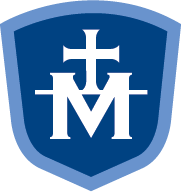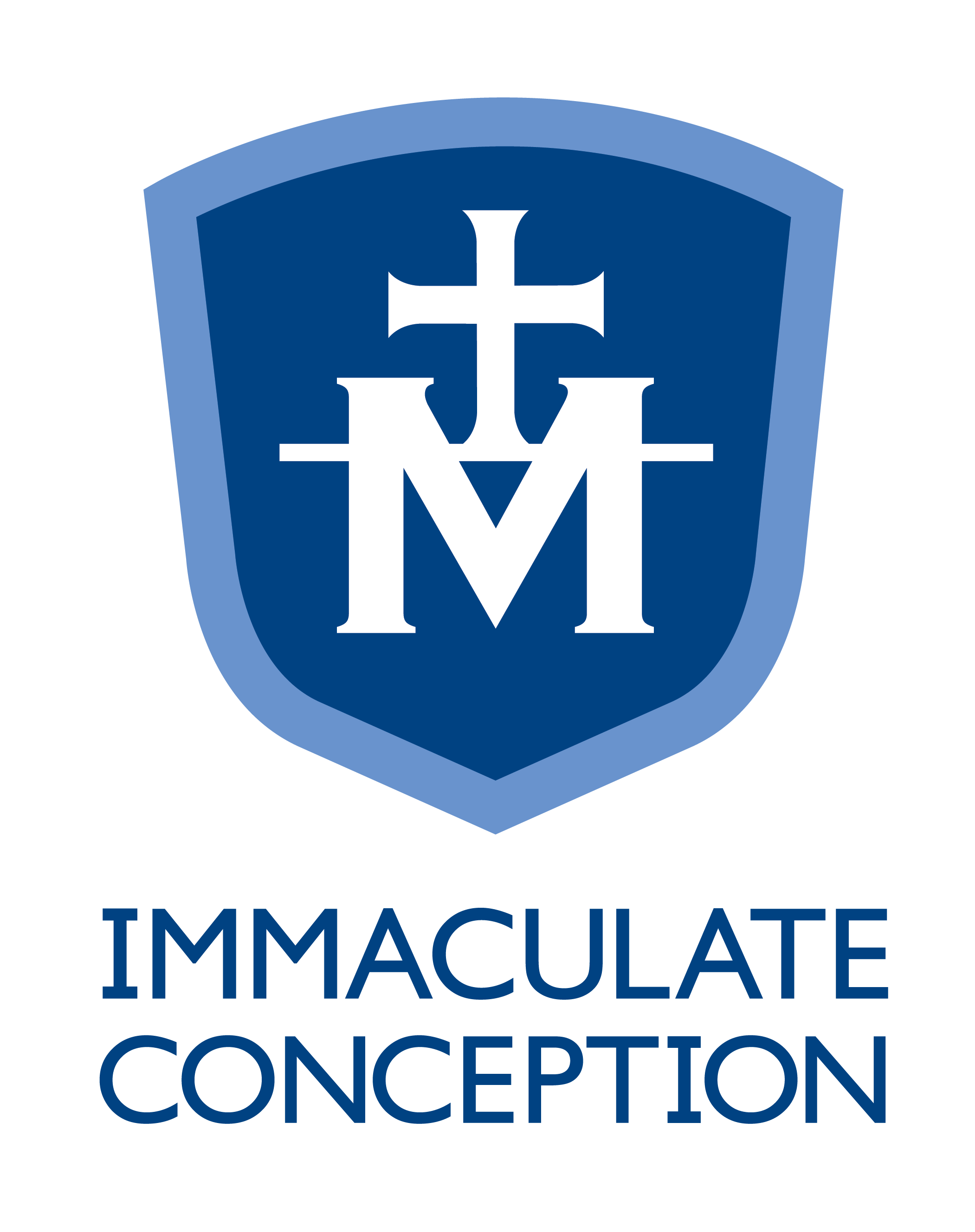
Stained Glass
Since the early centuries of the Christian era, church windows were decorated with stain glass. This material served a triple purpose. It kept out weather, admitted light and served to tell stories to a people who were for the most part illiterate, as we understand the term, but who understood perfectly the language of the pictures. In this way the Church was able to keep before the faithful constant reminders of the incidents of Our Lord’s life and of the lives of the prophets and saints.
The general character of much of the stained glass in Immaculate Conception Church is similar to the stained glass of medieval Europe. The dominant color throughout Is blue, the accepted color of the Mother of God.
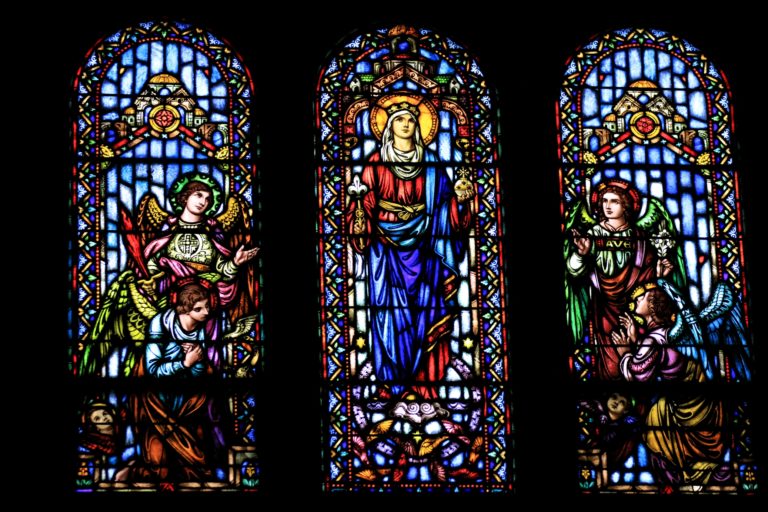
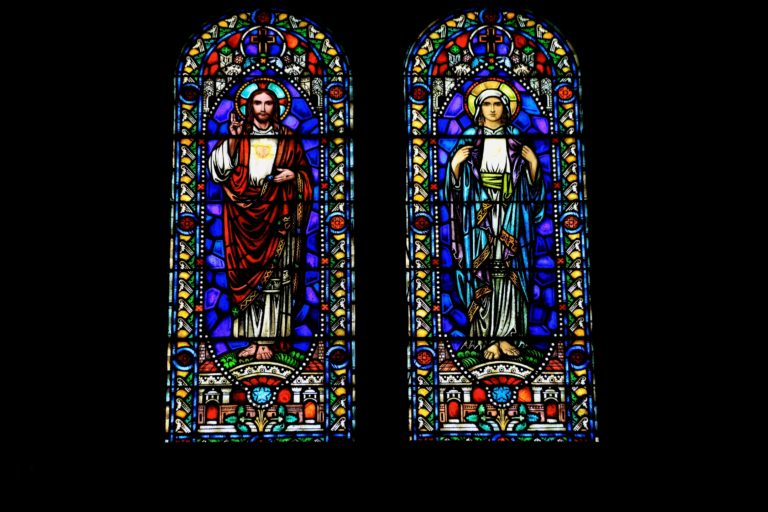
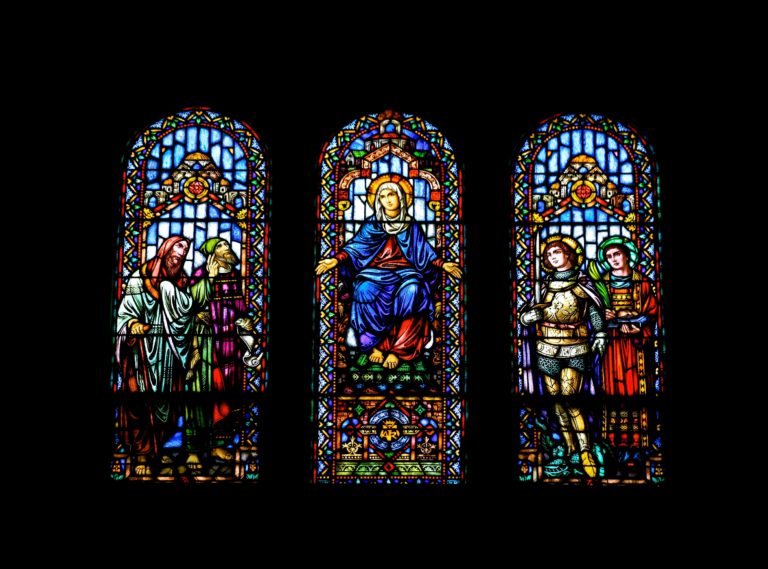
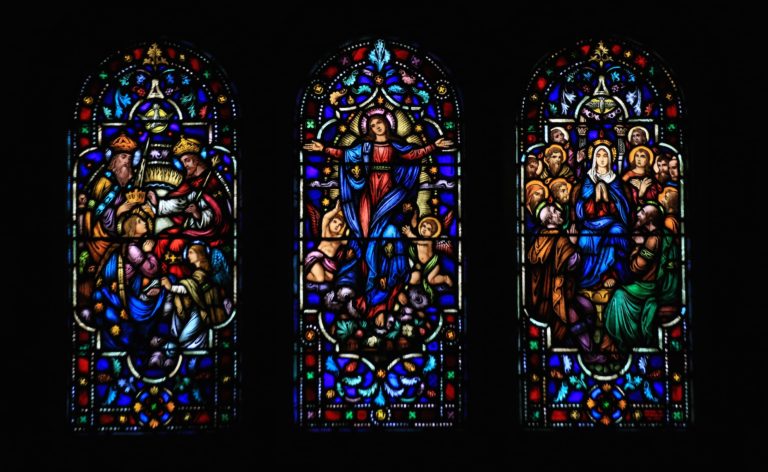
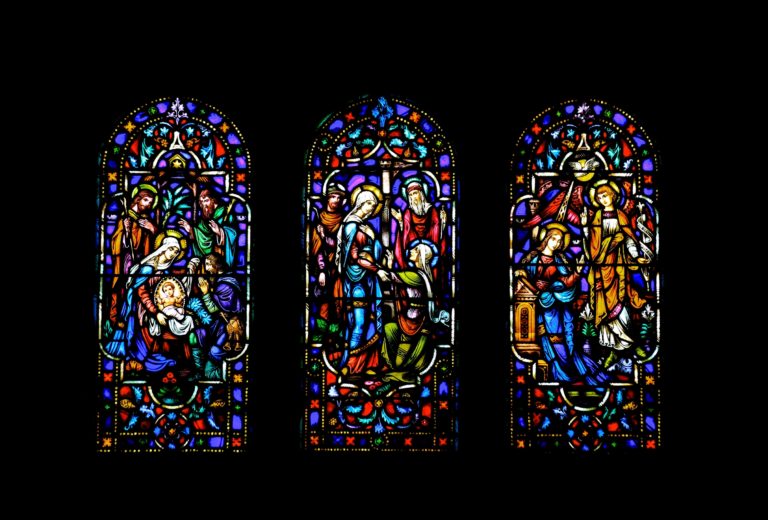
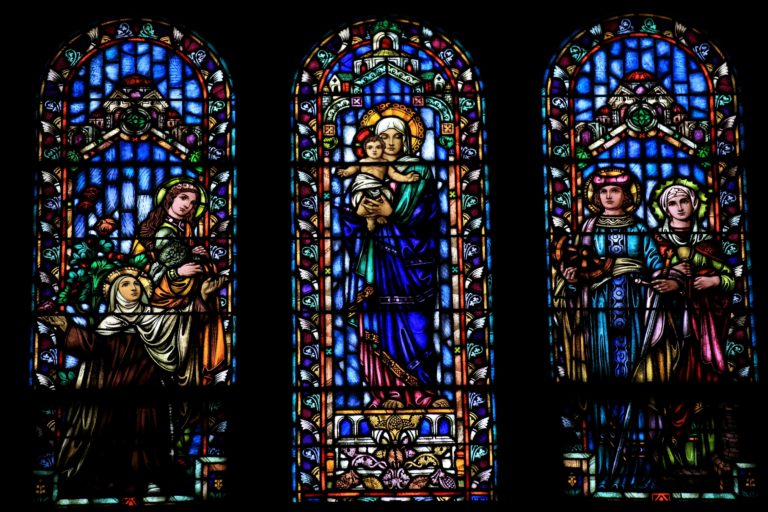
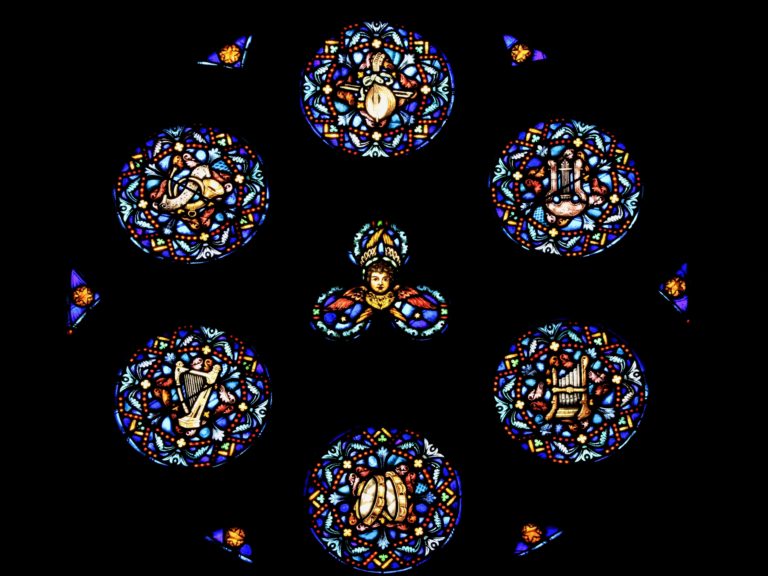
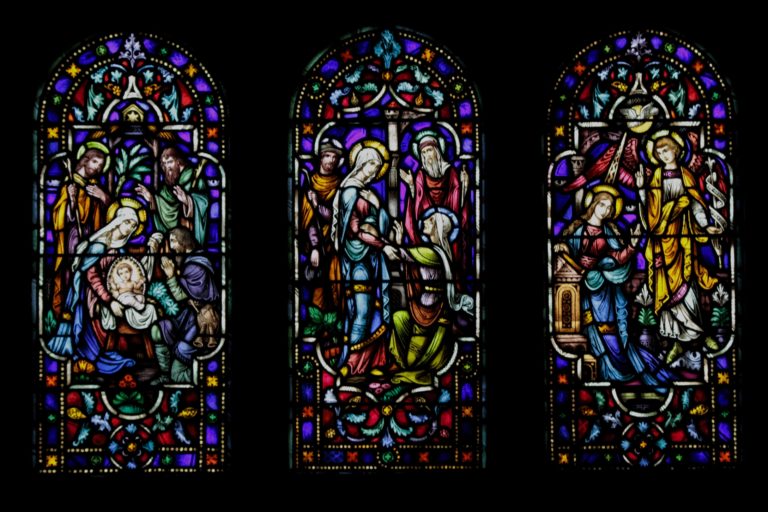
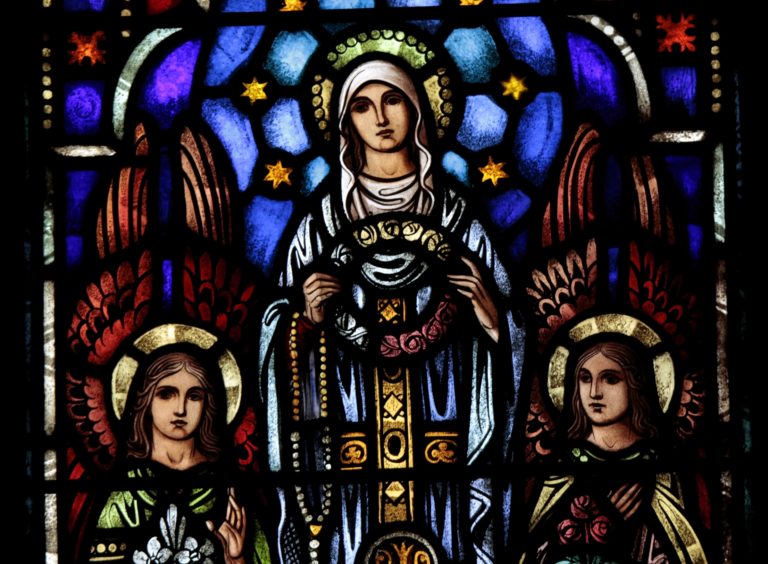
The subjects of the eight windows in the sanctuary are: Christ the King, Queen of Heaven, The Sacred Heart of Jesus, the Immaculate Heart of Mary and the four evangelists, Saint Matthew, Mark, Luke and John. The circular window above the high altar contains the monogram “MARIA” in the center, surrounded with symbols of the Blessed Mother in the six outer circles. The circle window at the rear of the church, in the choir gallery, contains ancient musical instruments indicating the place music has always held in the Christian ritual.
The windows in the aisles, starting from the front in the west side, depict the fifteen mysteries of the Holy rosary. These windows are excellent in design, composition and color, are done in the same spirit as much of the medieval stained glass and are some of the very finest windows in this part of the country. Following the mysteries of the rosary is a group of three windows containing subjects relating to that devotion. They are the “Apparition of Lourdes”, the “Madonna of the Rosary” (holding a wreath of fifteen roses) and “St. Dominic and St. Catherine receiving the Rosary”.
Two single aisle windows, one on either side of the church, show Pope Pius IX declaring the dogma of the Immaculate Conception, and Duns Scotus, the defender of that doctrine.
In the nave above the arches is a series of twelve groups of three windows each. These windows are designed to be the main source of light and are treated with subjects and symbols taken mostly from the litany of the Blessed Virgin.
Starting on the west side nearest the altar, the first group portrays the “Virgin of Virgins” with a figure of the Virgin Mary in the center having St. Catherine and St. Barbara on the right and St. Agnes and St. Therese, the Little Flower, on the left.
The next group contains three symbols, the fleur-de-lis, and the moon and lilies symbolizing “Mother most pure”, “Mother undefiled” and “Mother most chaste”.
This group is followed by another group which portrays the idea of “Comforter of the Afflicted”, “Health of the Sick” and “Refuge of Sinners” by a figure of the Blessed Mother in the center window with various figures in two side windows.
This group is followed by another containing symbols referring to “Mother Inviolate” (a closed gate), “Virgin most Powerful” (a pillar) and “Mother of Our Redeemer” (A chi-rho upheld by two hands). In the last symbol, the CHI-RHO monogram is most ancient abbreviation of the word Christ, the hands are those of the Blessed Mother and together the symbol contains the idea of Christ being supported on the hands of His Mother.
The next group signifies “Queen of Angels” with our Blessed Mother in the center and angels on either side.
The last group on the west side is another series of symbols conveying the ideas of “Mirror of Justice” (scales), “Seat of Wisdom” (a throne) and “Singular Vessel of Devotion” (a golden container).
Following around the church, on the opposite (east) side, the group nearest the entrance contains symbols referring to “Mystical Rose (a rose), “ Tower of David” (a tower).
Going toward the altar, the next group portrays the ancestry of the “Blessed Virgin” with a Madonna in the center window and on her right Jesse and David, the origin of the “House of David”, while on her left are St. Joachim and St. Anne, the parents of Our Lady.
The next group is another series of symbols referring to “House of God” (a house), “Ark of the Covenant” (the ark) and “Gate of Heaven” (a gate).
This group is followed by the Immaculate Conception windows with a figure of “Queen of the Immaculate Conception” in the center. In the panel to her right, we have Adam and Eve with God the Father as they have committed the original sin and on her left our first parents leaving paradise.
Following is another series of symbols containing “Morning Star” (a star), “Queen of the Most Holy Rosary” (a wreath of fifteen roses in three different colors) and “Queen of All Saints” (a vase from which flows water surmounted by a crown and with two birds). In the last symbol, the birds represent Christian souls drinking at the fountain of salvation and the crown depicts the queenship of Mary.
The last group refers to “Queen of Prophets”, “Queen of Patriarchs” and “Queen of Martyrs” in which on either side of the Queen of Heaven are shown, on the right a patriarch and a prophet and on the left St. George and St. Stephen.
In the baptistery window, St. John is shown baptizing Our Lord.
The sacristy windows contain simple symbols and in the boys sacristy are figures of St. Aloysius and St. John Berchmans.
The shrine windows are tapestry groups with overall patterns of conventionalized flowers.
All the stained glass windows in Immaculate Conception Church, Columbus, Ohio were designed and executed by Edward W. Hiemer & Co., Paterson, N.J.
